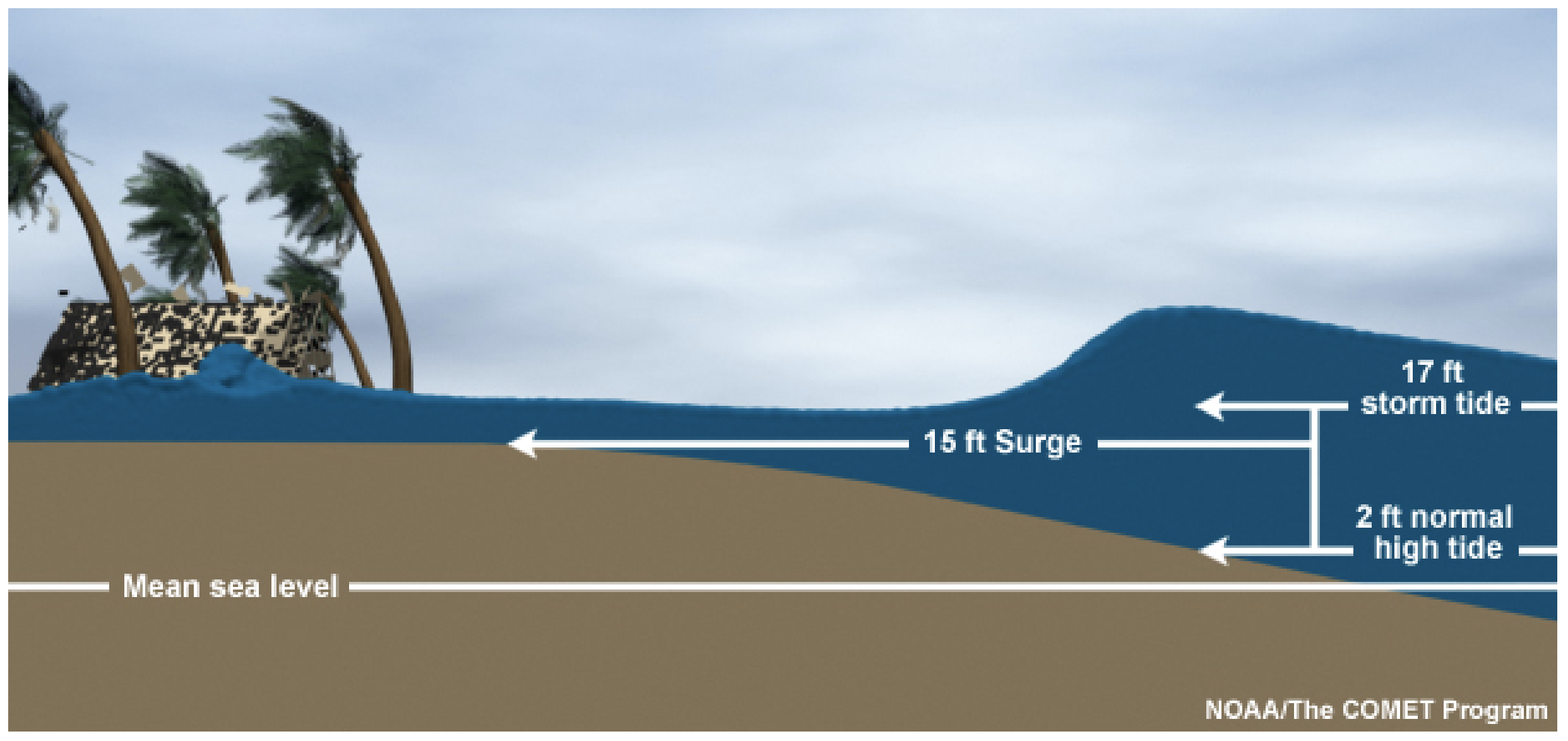1. Water-borne Hazards¶
1.1. Tsunami¶
The term tsunami is derived from two Japanese words, namely “tsu” (meaning harbor) and “nami” (meaning wave). Some of the original literature described them as tidal waves or seismic sea waves. Tsunamis are usually created by disturbances in the crust of the Earth. The resulting uplifting of the water surface over a large area forms a train of long-period waves. These waves generated from tsunamis have huge wavelengths. In contrast to wind-generated waves, where the periods are about one minute, the periods are of the order of one hour and more.
Once generated, these tsunami waves travel across the ocean basin to cause great destruction at locations far from the source. Owing to their destructive nature, it is crucial to comprehend the mechanisms of their generation, propagation and predict the extent of flooding/effect of wave forces in the coastal areas that are potential to tsunamis. In these areas susceptible to tsunamis, it is imperative to build resilient structures and communities.
This documentation compiles some of the basic ideas and information about tsunami events and modeling efforts.
1.2. Storm Surge¶
Storm surge can be defined as the abnormal rise of water generated by a storm over and above the predicted astronomical tides. During a storm surge, the water level rises due to the presence of a storm. There is no reference level in this regard. As shown in Fig. 1.2.2 is different from a storm tide which implies a rise in water level during a storm due to the combination of storm surge and the astronomical tide. A reference level is defined for a storm tide.

Fig. 1.2.2 Depiction of a storm surge event and comparison with storm tide (Source: NOAA storm surge over view.)¶
This documentation compiles some of the basic ideas and information about tsunami events and modeling efforts.